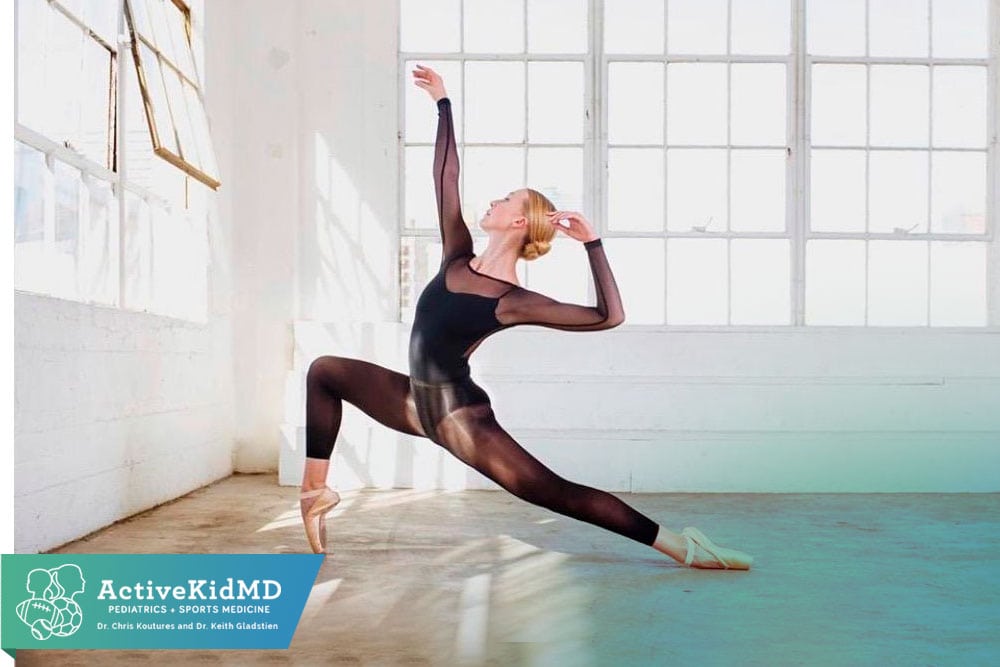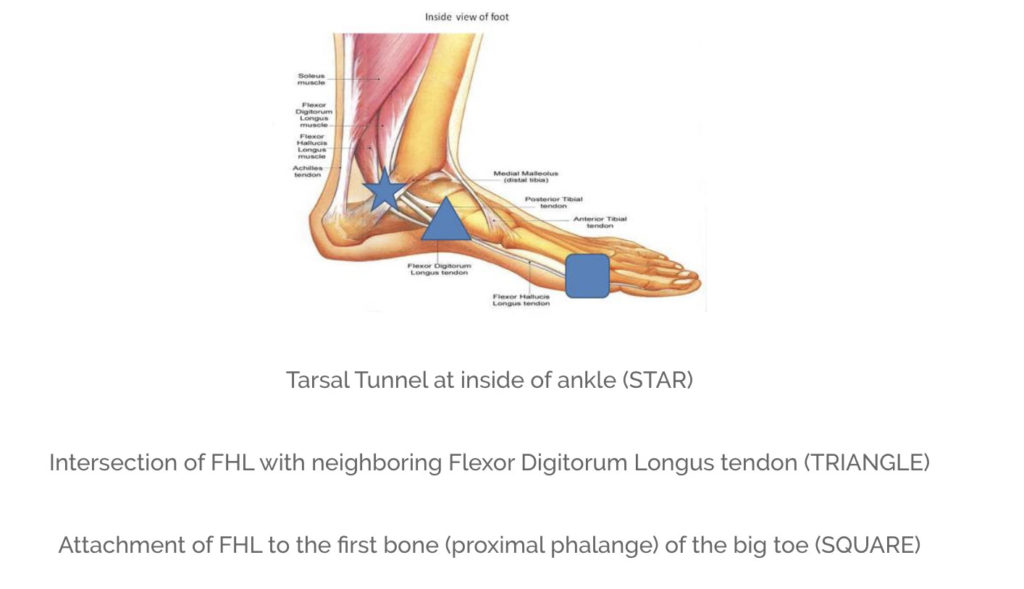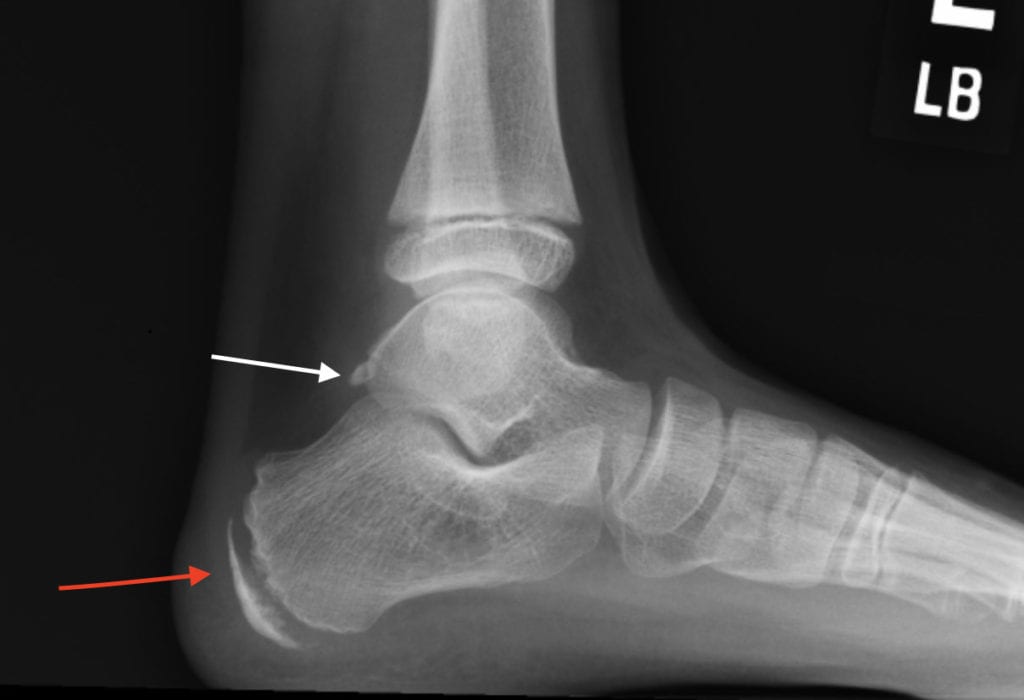Kendall Bottjer and @health_enpointe
You are one of many dancers with heel pain.
You’ve heard of, or been told, that an “extra bone” is the problem.
If so, is removing it going to be the fix?
Don’t let heel pain limit your leaps, turns, and jumps.
Find out why heel pain is common in dance, and is that “extra bone” the only problem?
Moving into pointe or demi-pointe places the ankle in a position called plantarflexion. Plantarflexion can narrow the space behind the talus (first bone of the foot) and the Achilles tendon. This is where soft tissues can be pinched together – what we medical types call posterior heel impingement. The more time spent in these positions, the higher the chance of irritation.
It is very common to see more heel pain in dancers with heavier rehearsal or class schedules. Additionally, dancers en pointe – namely those just starting or doing more difficult pieces may find more soreness in the heel region.
Now, ballet isn’t the only type of dance that leads to heel pain. Frequent leaps and jumps in any form of dance can trigger that posterior heel impingement.
Can we blame that “extra bone”?
What’s the scoop on that “extra bone”? Called an os trigonum, it is located right behind the talus bone which is a key part of the ankle joint. When the foot goes into that plantar flexed position, that os trigonum may pinch soft tissues in the back of the heel.
You don’t need the extra bone and some dancers have a larger posterior aspect of the talus (aka Stieda process) that also may narrow space in the back of the heel.
I’ll suspect an os trigonum/larger posterior aspect if there is pain right behind the talus on exam. A lateral (side view) x-ray of the ankle or heel can show an os trigonum or prominent posterior aspect of the talus.
About 7% of people have an os trigonum, and for most, it doesn’t cause any issues.
For dancers (as well as soccer players in my experience) who spend all that time in plantar flexion, an os trigonum may be blamed.
Why do I say may?
Read on.
So, you have an os trigonum or prominent posterior talus. Now what?
Does the presence of an os trigonum or prominent posterior talus automatically mean surgical removal or a need to stop dancing?
Slow down.
Ask a few questions.
First of all, is your pain truly coming from the back of the talus?
- It is best to treat the pain on exam, not rely simply on the x-ray finding.
- If there is no pain behind the talus, then there is less need to worry.
- Plenty of dancers have an os trigonum or prominent posterior talus that doesn’t cause them any problem.
Are there other things that can cause heel pain?
- A careful exam can identify the true cause of heel pain in a dancer.
- Many dancers have pain from an os trigonum/prominent posterior talus and other causes.
- Not addressing all causes of heel pain can lead to continued frustration. So what are these “other” causes?
Other causes of heel pain
Pain on the inside of the heel/ankle (aka Tarsal Tunnel Syndrome)
- Several tendons (connect muscles to bone) and a nerve are located on the inside of the heel. Limitations in movement of these tendons can lead to heel pain.
- One of the most common concerns is restricted motion of the flexor halicus longus tendon that attaches to the big toe. Yes, big toe problems can lead to heel pain.
- Want to learn more about the big toe?
- Click here for Dancers Big Toes
- I have found that many dancers with posterior impingement have more relief when Tarsal Tunnel Syndrome is evaluated and treated
Pain on the back of the heel bone (calcaneus) – especially in growing dancers
- The growth area (apophysis) at the back of the calcaneus can be stressed during periods of maximum height gain (usually late elementary to early high school years)
- Leaping, jumping and turning can irritate the growth area and cause finger-tip pain at the back of the heel
- Click here to Heal Young Dancer Heel Pain
Pain at the Achilles Tendon
- This pain is much more common in late adolescent and adult dancers (although it can happen in younger dancers, it shouldn’t be the first thought).
- Pain may include pain in the midportion/insertion of the tendon into heel or even discomfort of the lining of the tendon
- Pain at the Achilles tendon routinely also causes tightness of the calf muscles and weakness of hip control as main factors.
- Working on hip/buttock muscle strength can big-time help with heel pain in dancers
- Click here to Make Your Hips Stronger
What have I done for my posterior impingement?
Increasing pain-free motion and reducing swelling are two main goals of managing posterior impingement. Medication can help reduce pain and swelling. Options may include oral medications, topical creams, and anti-inflammatory injections.
A dance medicine specialist physician who is experienced with heel pain in dancers can help determine the best choice for you.
A skilled physical therapist can also be crucial in increasing strength, motion and reducing swelling in the soft tissues behind the talus.
Your dance instructors can review technique and volume of dance to reduce unnecessary stresses on the heel region.
If the pain persists despite medical treatment and a dedicated course of physical therapy, then it might be sensible to consider surgical os trigonum removal.
Once again, I’ll emphasize the need to consider all causes of heel pain – especially if you are considering having surgery. I have seen and treated too many dancers that have had removal of os trigonum and still suffer from heel pain after surgery.
This blog is designed to provide general advice and is not intended to diagnose or treat any injury act as a substitute or replacement for a complete evaluation by your trusted medical professional.
If you are in need of a specialist for any type of dance injury or illness, please contact Dr. Koutures at ActiveKidMD to schedule a complete medical evaluation.
Common Athletic Injuries – Heel Pain





